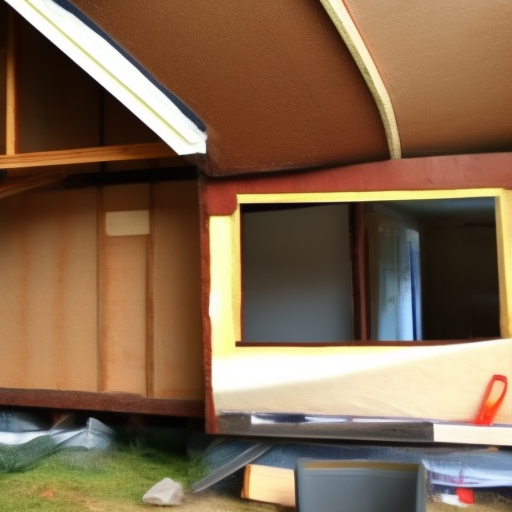Always dreamed of owning a tiny house? Wouldn’t it be exciting to customize your living space and make it your own? Well, that dream can easily become a reality! Building tiny houses does not have to be a complex process – in fact, one of the most important steps is to focus on insulation. When considering insulation for a tiny house, it is important to take into account the small scale and the constraints that come with it. In this article, we will explore the importance of insulation in a small-scale space and provide helpful tips to get you started.
Rethinking Space
Have you ever walked into a room that just didn’t feel right? Maybe it was too cluttered, or the furniture was arranged awkwardly. We’ve all experienced the impact that physical space can have on our mood, productivity, and overall well-being. It’s time to rethink the spaces we inhabit and make them work for us.
One example is the rise of co-working spaces. They offer a more flexible and collaborative work environment, bringing people from different industries and backgrounds together under one roof. Companies like WeWork and Regus have disrupted traditional office spaces, allowing for a more dynamic and creative approach to work. Another example is how we use our homes. With the pandemic forcing so many of us to spend more time at home, people are rethinking how they utilize their living spaces. Many are transforming spare bedrooms into offices, creating designated workout areas, and even setting up virtual classrooms for their children. It’s all about maximizing every inch of living space.
Types of Insulation
Insulation is a vital component of any building, as it helps control temperature and energy costs. There are various , each with its unique features and benefits. The following are some of the most popular :
- Fiberglass insulation: This is one of the most commonly used insulation types and made from fine glass fibers. It is often pink or yellow and comes in batts or rolls that can be placed between studs, joists, and rafters.
- Spray foam insulation: This insulation is a mixture of chemicals that create dense foam. It expands quickly and can fill any gap or cavity, making it perfect for hard-to-reach areas. It adheres to almost any surface and is ideal for basements and crawl spaces.
- Radiant barrier insulation: This is a reflective material often made of aluminum foil that is installed on walls and roof decking. It reflects heat away from the building, keeping it cool in the summer.
But the type of insulation you choose will depend on your needs and the building’s construction. For example, if you live in a cold climate, you will need thicker insulation to retain heat, while in warmer climes, a thinner and reflective barrier may be more appropriate. Also, remember that improper installation can impact the effectiveness of your insulation. Always hire an experienced insulation contractor to do the job right.
Pros and Cons
When it comes to making a decision, it’s easy to get stuck between the of it. On one hand, there may be great benefits to taking a certain route, but on the other hand, there may be drawbacks that can’t be ignored. For example, let’s say you’re considering purchasing a brand-new car. The pros may include that it’s reliable, has modern features, and will give you a sense of pride. However, the cons might be that it’s a more expensive choice, will depreciate in value quickly, and require higher monthly payments.
Another example of the debate is deciding to take a new job offer. The pros could include a higher salary, better benefits, and the potential for growth within the company. However, the cons could be that the location isn’t ideal, the commute will be longer, and the job may not align with your passions. Ultimately, it’s important to weigh both the before making a decision. Consider what is truly important to you and what will bring you a sense of happiness and fulfillment. By doing so, you’ll be able to feel confident and at peace with whichever path you choose.
Transforming Tiny Houses
Have you ever dreamed of having your own home but are put off by the cost and maintenance involved? Enter tiny houses – the latest trend in home ownership. These small, yet highly functional homes are popping up all over the world, offering an economical and eco-friendly solution to traditional house living. But what if you want to customize your tiny home to fit your unique lifestyle? That’s where come in.
take the concept of tiny homes to the next level by offering customizable features such as foldable walls, hidden appliances, and multi-functional furniture. For example, some can convert from a bedroom to an office in minutes, or even include a rooftop deck that can be hidden away when not in use. These unique features allow tiny homeowners to make the most of their small space, without sacrificing style or functionality. With the growing popularity of tiny homes, are becoming more and more accessible, offering everyone the chance to embrace the simplicity and freedom of tiny living. Inspired by houses of ancient centuries, tiny house building takes up a more sustainable approach with a smaller carbon footprint. With the right tools and techniques, one can achieve insulation on a small scale while embracing the possibilities of living in a snug, comfortable and efficient home. Welcome to the world of tiny homes – and may your insulation journey be a successful one.